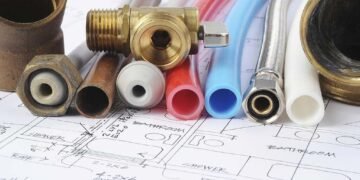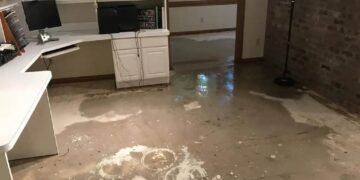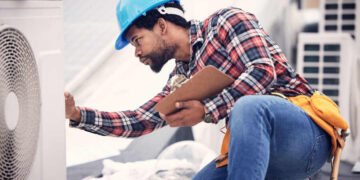Homeowners tend to obsess with their houses’ aesthetics and overlook a more important aspect that could lead to an impactful health concern if left disregarded — proper ventilation.
Some consequences of poor ventilation include headache, dizziness, fatigue, poor sleep, and increased risks of contracting airborne diseases caused by viruses. Accordingly, different health institutions and even local government bodies frequently remind everyone about the importance of air circulation in preventing COVID-19 spread.
Those struck with the realization of the significance of bringing fresh air into their homes can read further to understand its benefits, available ventilation options, and things they can do to improve indoor air quality while a renovation is underway.
Benefits Of Having Proper Ventilation
Air circulation isn’t an issue for decades and centuries until the use of insulations and the replacement of natural building materials. After centuries of leaky homes, fresh air could no longer enter through gaps, cracks, and holes of a residential establishment’s envelope.
What we thought was convenient resulted in VOC, formaldehyde, and hazardous chemical off-gassing. On top of that, some construction firms did not consider ventilation. As a result, unaware clients had to worry about the expenses of adding air flow systems later on or suffer if they ignored its importance.
Listed below are the benefits of having a good ventilation system or building a home with great regard for fresh air circulation.
1. Controlled Indoor Moisture
Excessive moisture from quickly cooled humid air leads to condensation. This phenomenon is a catalyst for the growth of molds and mildew, the weakening of wood structures, and the peeling of wallpapers. Ventilation reduces indoor moisture, which also helps in removing damp and musty smells from your home.
2. Radon Gas Reduction
A product of naturally decaying uranium in soil and rocks, Radon gas is abundant in homes near mines, caves, and water treatment facilities. According to the World Health Organization, radon gas exposure may cause cancer, and adequate ventilation should prevent the spike in the concentration of this harmful gas.
3. Reduce VOC Off-gassing
As mentioned earlier, new building materials promote VOC (volatile organic compound) off-gassing, apart from other chemical reactions that could take place in a house or room with very little air movement. It may be impossible to eliminate VOCs in a residential home, but a more open atmosphere should prevent high concentrations, which are toxic to the human body.
4. Better Health and Wellness
Air impurities may be a silent killer. Molds, radon gas, allergens, VOCs, and others are unobservable to the naked eye, but every second of exposure to these contaminants carries immense risks. That frequent dizziness may not be caused by stress alone, so it’s best to reassess the ventilation every space in your house receives.
Best Home Ventilation Type
Due to the spike in air quality issues in many households, solution providers invented many ventilation types.
The most common in American homes is a structure with no ventilation at all. While this may sound sad, it wasn’t an issue until the introduction of insulation and the use of inorganic materials in building houses. Thus, the first homes that aren’t leaky are guaranteed to have poor air circulation inside, and building owners have to renovate establishments or purchase machines to allow proper air circulation through the corners of their properties.
Natural ventilation is an uncommon strategy and difficult to achieve. Many features must work together to allow fresh air to circulate while simultaneously getting rid of stale air. Some executions of this type involve solar chimneys and custom-made inlet ports.
The natural way may sound fancy and sustainable. However, the combination of various mechanical ventilation approaches is a better solution. Exhaust-only homes rely on cracks and intentionally-made inlets for the air to come in, while stale air is sucked in and released outside by exhaust devices.
Meanwhile, supply-only ventilation is a straightforward strategy. The most common application uses a fan to bring fresh air to the room as the stale air escapes to cracks and other openings.
Balanced ventilation type using heat-recovery ventilators (HRV) works best in colder climates. Many American homes would find it to be a more fitting choice. ERVs, particularly an improved HRV version, prevent areas from getting too dry in the winter and too humid during summer. Both mechanisms use an air-to-air heat exchanger system to control moisture and pre-condition the incoming indoor air.
It is also worth noting that leaky homes don’t guarantee proper air circulation. Thus, an air-quality check and availing of any of these ventilation types may still be better than doing nothing about the stagnant airflow in your room.
Things To Do To Improve Home Ventilation
Adopting any of these ventilation systems can’t happen overnight. But this is not an excuse to let your body absorb molds, harmful gasses, and viruses that go along with the stale air.
Bring in as much fresh air in rooms as possible while waiting for the commencement of applying ventilation systems to the space. The easiest procedure is to open all windows and doors if possible, and if doing so won’t pose a risk to security. It allows fresh air to enter, preventing the accumulation of virus particles inside.
Turn on the fans and let them blow air while facing the window. This method helps improve airflow, even without an open window. Do not point fans directly at people, as this means blowing contaminated air straight at them.
Bathroom and kitchen exhaust must be turned on while the rooms are in use. It’s best to keep them running for a few minutes to an hour for better air circulation.
Lastly, limit the number of people inside an enclosed room. Hold meetings or gatherings in outdoor spaces or bigger rooms. Aside from being a social distancing measure, this practice ensures everyone breathes the best air possible.
Takeaway
After the COVID-19 onslaught, workers in the built industry had to rethink the design of homes to accommodate social distancing measures and prevent the spread of the virus due to stagnant air. This realization should give way to structures that promote better air passage.
But even without the threat of a virus outbreak, homeowners must give more attention to air quality every time they move to a new house or renovate spaces to eliminate frequently underrated health hazards associated with poor air ventilation.
Recommended posts:














